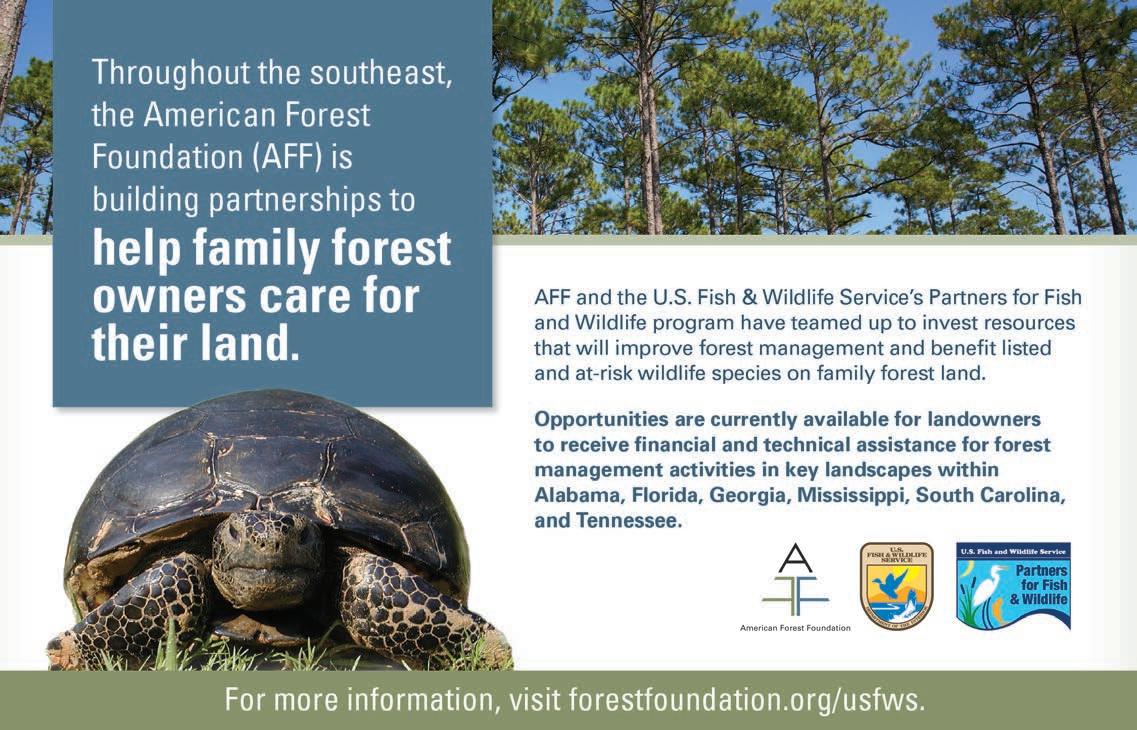Longleaf-Leader-Winter-2021.qxp_Layout 1 12/7/20 7:00 PM Page 7
Cheraw State Park in South Carolina. Photo by Ad Platt.
MANAGEMENT CHECKLIST WINTER 2021 l Site-Prep Burns: Sometimes, it is important to conduct a site prep burn prior to planting longleaf. Site prep burns can remove logging slash, lead to better planting jobs, stimulate early growth by increasing available nutrients, and decrease hot spots that may kill young seedlings in subsequent burns. On deep sands or sites with little logging slash, site-prep burns may not be needed; fuel can be saved until the first or secondyear burn.
l Plant Native Warm-Season Grasses: Later winter through early spring is the recommended time to plant our native understory species. Some plants require a cold-stratification period and need to be planted earlier. l Herbicide Treatments: Basal bark and stem injection herbicide treatments are typically most effective at controlling unwanted or invasive trees and shrubs during the dormant season. l Walk the “Line”: Now is an excellent time to inspect your property lines and freshen up boundary line markings. Take advantage of the cooler weather and greater visibility in the winter woods. l Install Nest Boxes: If you want more natural pest control agents like kestrels and owls on your property, install boxes early, as these are among the species that begin nesting in winter. l Timber Thinning: Take advantage of dry conditions and thin when the bark is less prone to slipping to minimize equipment damage to your stand. Thinnings later in the year may knock off patches of bark when the sap is rising, leading to stress, beetles, loss, etc.
l Planting Longleaf: To take advantage of the winter precipitation and maximize survival, early planting is almost always better than late planting. With containerized seedlings, proper planting depth is the most critical factor for success. l Prescribed Fire: Late December through the end of winter is an excellent time to introduce fire in young, healthy longleaf stands to help control unwanted pine seedlings and other competition. Winter is also a prime time to conduct fuel reduction burns in mature or sapling stands but use caution (or wait) when burning in drought-stressed stands. If reintroducing fire into a long-unburned stand, remember to monitor duff moisture levels before burning and plan to do immediate mop-up. l Evaluate Young Stands: Evaluate young stands to determine one-year survival and ensure adequate stocking. Wait until after the first frost when the grass stage longleaf is more easily seen. l Prune Longleaf: In some stands that lack fuels or have a low stocking rate, mechanical pruning may be an option to avoid the “Old Field” growth form. Winter is the easiest time to prune and should be finished before the spring green-up. Pruning may not be practical in a large stand.
l Mechanical Brush Management: May be easier in this season when aiming to reduce heavy shrub layers. Allow time to dry down the slash and follow up later with a growing season burn.
Reach out to The Longleaf Alliance with any questions you may have pertaining to establishing and managing longleaf stands at longleafalliance.org/contact-us
[4]














